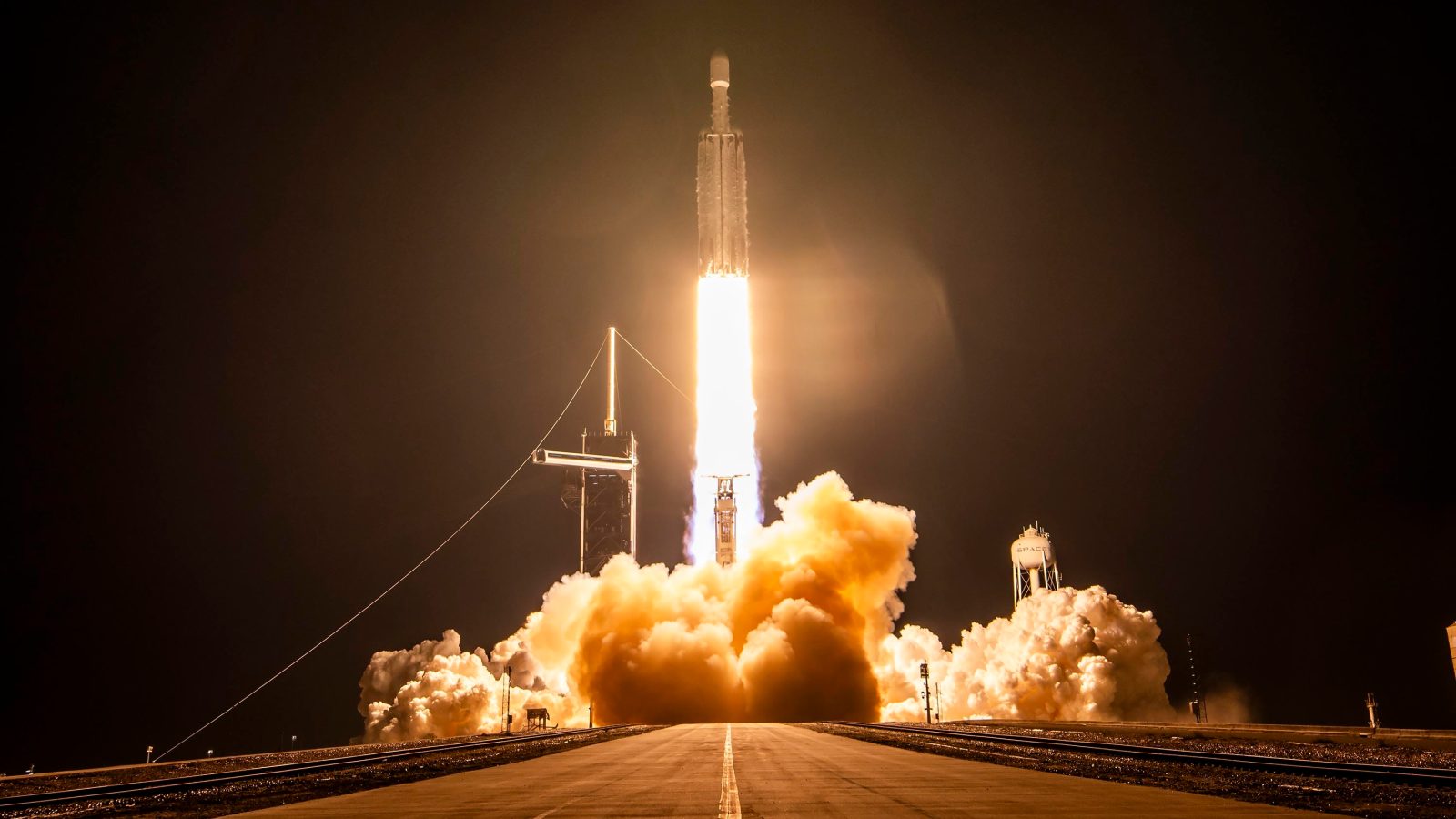
Last night SpaceX rounded out the year with a double header, launching a classified mission on the Falcon Heavy for the US Air Force and Space Force and then about three hours later, 23 Starlink satellites. This completed another record breaking year with 98 total rocket launches from the company and many other milestones.
Last night SpaceX set a record for the quickest turnaround between launches yet with the USSF-52 mission and Starlink Group 6-36 lifting off less than three hours apart. For once, you could have sat out on the Cocoa Beach and saw two launches without moving, maybe only have a short snack in-between.
The USSF-52 mission launched the Air Force’s X-37B spaceplane on its classified mission. While the Starlink launch delivered 23 fresh v2 mini Starlink satellites into low Earth orbit.
With 2023 now complete, here are some stats and take aways from this year for SpaceX.
2,000 Starlink satellites in one year
When Elon Musk shared he was hoping for 100 launches in 2023, I think a lot of us knew that would mean a lot of Starlink launches. While there is still plenty of demand, and some even say shortage, for heavy lift capabilities. Getting payloads to their rockets is still what limits most launch rates.
For SpaceX, being able to fill any launch with Starlink satellites means it can launch as fast as it can get its rockets back to the pad. Adding up the total satellites brings us to a mind boggling 2,000 Starlink satellites now in orbit (if my math is correct 2,014 exactly).
An interesting item to note that I only discovered while counting up each launch was the number of satellites launch per mission increased part way through the year. SpaceX started the year launching v1 Starlink satellites in batches in the 40s and 50s from both coasts. The company then moved to larger and more capable v2 mini satellites.
The added size and weight meant the Falcon 9 could only launch 22 Starlink satellites from the East Coast and 21 from the West Coast. That number increased by one for both coasts part way through the year. It doesn’t sound like much, but that practically gave them a whole other launch worth of satellites by the end of 2023.
These improvements in Falcon 9 launch efficiency can only come from launching the rocket as much as SpaceX has in recent years. The improvements also lead to Dragon missions returning to support RTLS landings of its boosters for both cargo and crewed missions.
12 astronauts delivered to the ISS and returned
Speaking of crewed missions, SpaceX launched three of them this year. The same as 2022, but the company could push to as many as four in 2024.
2023 saw the second UAE astronaut, first two Saudi astronauts, and first internatioal Dragon pilot all to fly to space. Below are a list of there crews of the three missions that flew this year:
- SpaceX Crew-6
- Stephen Bowen, NASA
- Warren Hoburg, NASA
- Sultan Al Neyadi, MBRSC
- Andrey Fedyaev, Roscosmos
- Axiom-2
- Peggy Whitson, Axiom (NASA Ret.)
- John Shoffner
- Ali AlQarni, SSC
- Rayyanah Barnawi, SSC
- SpaceX Crew-7
- Jasmin Moghbeli, NASA
- Andreas Mogensen, ESA
- Satoshi Furukawa, JAXA
- Konstantin Borisov, Roscosmos
Next year SpaceX plans to kick off the year with the launch of Axiom-3 in January. Paired with the expected two NASA contracted flights and the possibility of the Polaris Dawn mission, that totals four possible Crewed Dragon missions.
2 test flights of its Starship rocket
The biggest storyline this year for any aspect of spaceflight was the first launch of SpaceX’s Starship rocket. The company has been working towards this moment for years down at its Starbase facility in South Texas. Gosh, I remember when it was just a empty field with a tent and a hopper.
In April. SpaceX finally received all the sign offs from local, state, and federal agencies to launch its fully integrated rocket. Sprewing chucks of concrete and debris across the coast, losing several engines throughout flight, the rocket didn’t make it further than stage separation.
After repairs to the pad and a multitude of changes to Starship’s systems, the company was ready for another flight in November.
Starship Flight 2 blew past Flight 1’s milestones, conducting its first ever hot staging successfully with the second stage almost making it to the end of its burn. However, both the Super Heavy booster and Starship upper stage ran into some sort of trouble, requiring flight termination charges to be triggered.
SpaceX finished 2023 with static fires of both its Flight 3 Starship and Super Heavy stages and hope to fly again in early 2024.
96 Falcon 9 and Falcon Heavy flights
Even if it didn’t reach its 100 launch goal, the Falcon 9 still became the most launched rocket in the world. Carrying more than one million kilograms of payload to orbit, SpaceX remained the king of launchers firmly this year.
Of those 96 Falcon launches this year, five of them were Falcon Heavies, the most ever in a single year. While it might have been dethroned as the world’s most powerful launches (twice, by SLS and then by Starship), it still brings a good crowd to the Space Coast to watch it launch and land.
Next year SpaceX plans to launch as many as 144 missions. With 2023 possibly pushing 200 if both coasts continue to ramp up as expected. We could also see the first Falcon 9 booster reach 20 reuses and Starship launch even more times than 2023.
2023 wasn’t just a crazy year for spaceflight, it was the start of what will soon become normal.
FTC: We use income earning auto affiliate links. More.




Comments